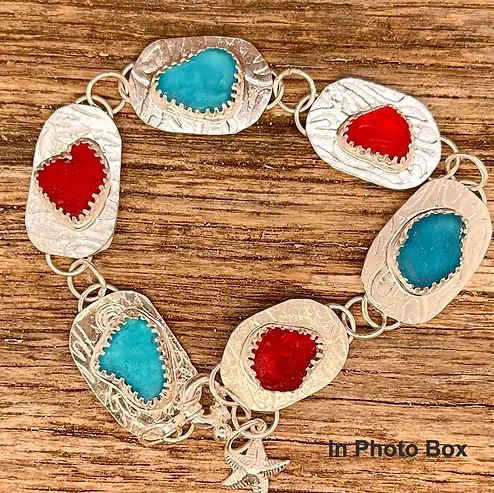Genuine sea glass, with its smooth, frosted surfaces and vibrant hues, has fascinated collectors and artisans alike for centuries. These tiny treasures, often found washed ashore, offer a unique glimpse into the intersection of nature’s artistry and human history. But what exactly makes sea glass so special, and why has it captured our imagination?
What is Genuine Sea Glass?
Genuine sea glass is a type of glass that has been weathered and tumbled by the sea. Unlike manufactured glass, which starts with a sharp, clean edge, sea glass begins as shards of broken bottles, jars, or other glass items. Over time, these shards are tumbled by the action of the waves and sand, which smooths their edges and creates the frosted texture that sea glass is known for.
The journey from a sharp fragment to a smooth, frosted piece of sea glass can take years or even decades. During this process, the glass becomes polished and loses its original shape, resulting in a small, rounded piece that is often beautifully colored by the minerals it has come into contact with.
The Science Behind Sea Glass
The transformation of ordinary glass into genuine sea glass involves several natural processes. When glass is exposed to the elements, it undergoes physical and chemical changes. The constant abrasion from sand and stones, combined with the action of the waves and the salt in the sea, wears away the sharp edges of the glass. Meanwhile, the glass is also subjected to a process called “leaching,” where the surface of the glass gradually dissolves, adding to the frosted appearance.
Colors in sea glass are often the result of the original glass’s composition. Common colors include green, brown, and clear, which are typically derived from bottles and jars. Rare colors such as cobalt blue, red, and purple are less common and can significantly increase the value of a piece of sea glass.
The Appeal of Sea Glass
The appeal of genuine sea glass lies in its natural beauty and the story it tells. Each piece of sea glass is a small, unique artifact that has traveled through time and space before ending up on a beach. Collectors are drawn to the sense of mystery and history that each piece holds. It’s a reminder of the interaction between human activity and the natural world, as well as a testament to nature’s ability to transform and repurpose.
Sea glass is not only appreciated for its aesthetic qualities but also for its potential as a medium for artistic expression. Many artisans and jewelry makers use sea glass to create stunning pieces of art, from necklaces and bracelets to decorative items and mosaics. The uniqueness and natural origins of sea glass make it a prized material for those who appreciate craftsmanship and creativity.
Collecting Sea Glass
For many, the search for genuine sea glass is a cherished pastime. Beachcombers and collectors often spend hours scouring shorelines, hoping to find that perfect piece of sea glass. The thrill of discovery and the satisfaction of finding a rare or unusually colored piece can be incredibly rewarding.
If you’re interested in collecting sea glass, it’s important to respect the environment and follow local regulations. Always be mindful of conservation efforts and avoid removing glass from protected areas. Remember, the true value of sea glass is not just in the pieces you find, but in the experience of discovering them and the stories they carry.
Conclusion
Genuine sea glass embodies the perfect blend of natural wonder and human intrigue. Its journey from discarded glass to cherished treasure is a testament to the beauty of nature’s transformations and the enduring appeal of historical artifacts. Whether as a collectible, an artistic medium, or simply a charming reminder of the sea, sea glass continues to captivate and inspire those who encounter it.









